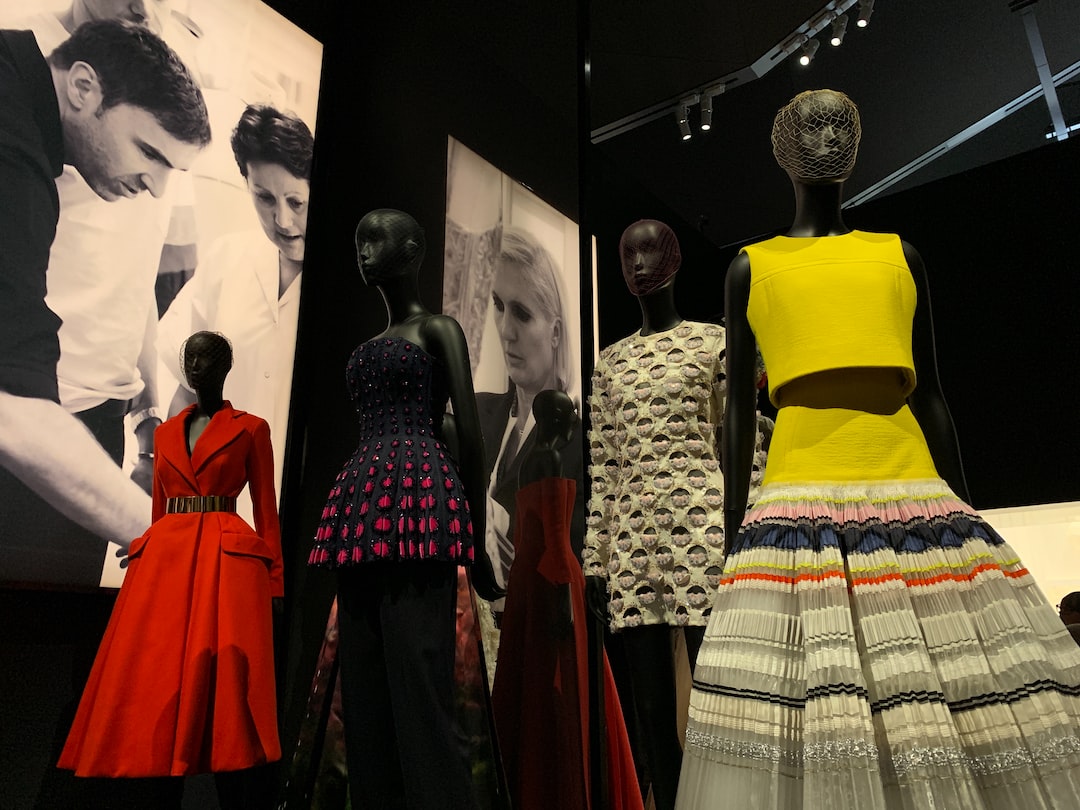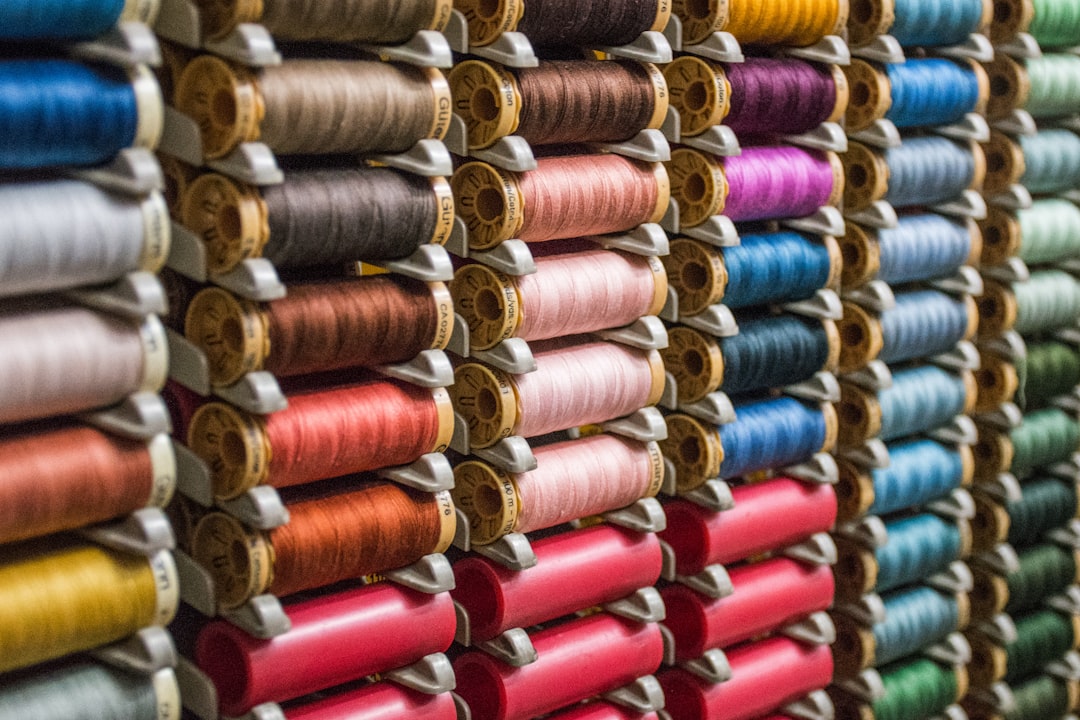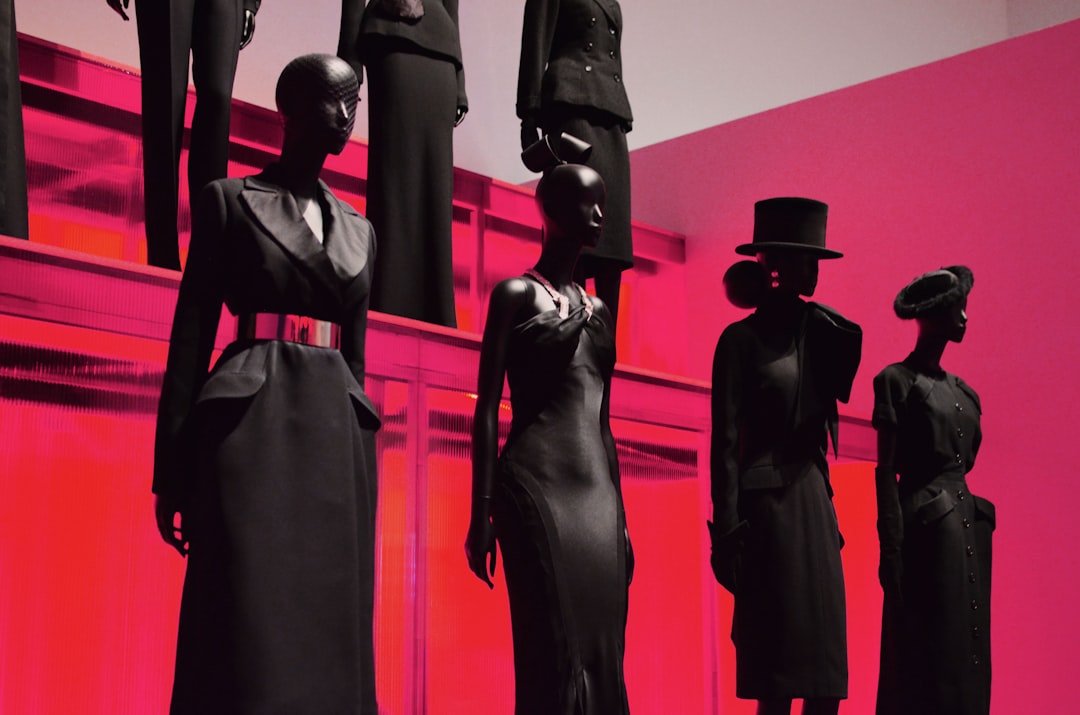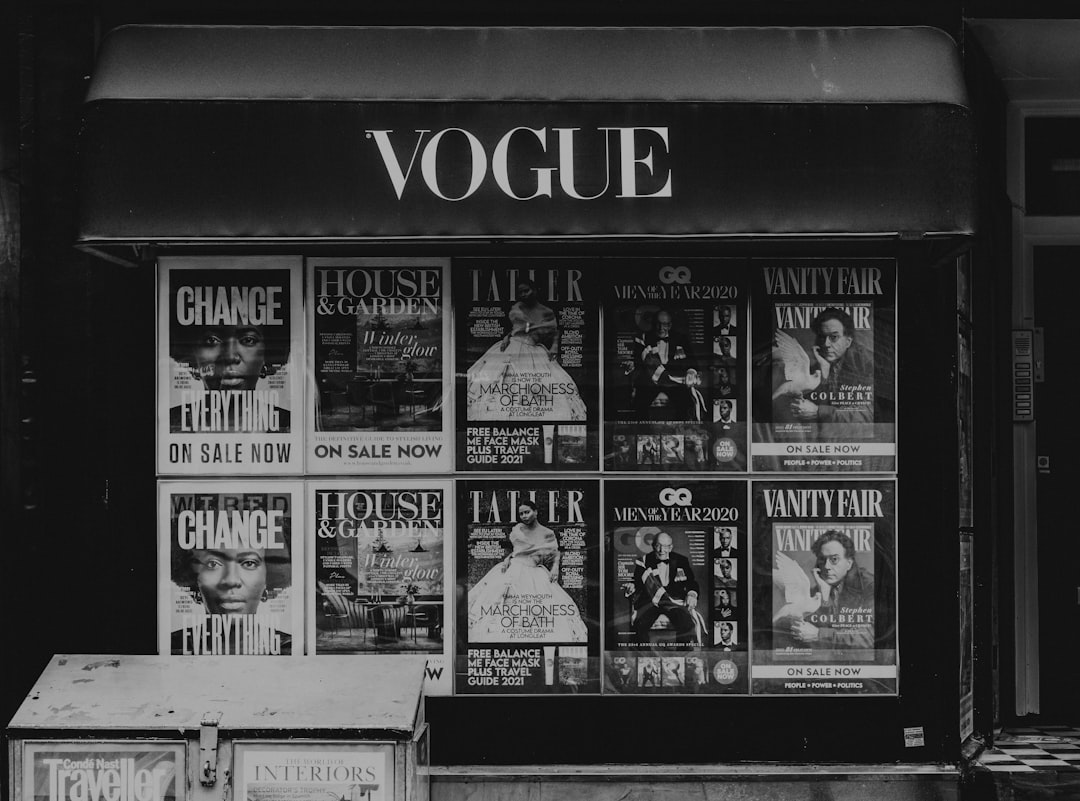Artificial Intelligence (AI) has become a buzzword in almost every industry, and fashion is no exception. In recent years, AI has been transforming the fashion industry, revolutionizing the way brands interact with customers, reducing waste, enhancing the production process, and predicting future trends. With the help of AI, fashion brands are now able to provide personalized shopping experiences, optimize their supply chain, and even offer virtual try-ons.
The fashion industry is known for being fast-paced and constantly evolving. With new trends emerging every season, it can be challenging for brands to stay ahead of the competition. However, AI is helping fashion brands to predict trends and stay ahead of the curve. By analyzing consumer data, AI algorithms can identify emerging trends and predict what customers will want next. This not only helps brands to stay relevant but also reduces the risk of overproduction and waste.
AI is also helping to promote sustainability in the fashion industry. By optimizing the production process, brands can reduce their carbon footprint and minimize waste. AI-powered algorithms can help to identify areas of the supply chain that can be improved, such as reducing energy consumption and minimizing water usage. This not only benefits the environment but also helps brands to save on production costs.
In addition to sustainability, AI is also helping to enhance the customer experience. With the rise of e-commerce, customers are looking for more personalized shopping experiences. AI-powered algorithms can analyze customer data and provide personalized recommendations based on their preferences and past purchases. This not only enhances the customer experience but also increases customer satisfaction and loyalty.
As technology continues to evolve, the fashion industry will continue to be impacted by AI. From virtual try-ons to supply chain optimization, AI is changing the way fashion brands operate. In the next few sections, we will explore some of the ways in which AI is transforming the fashion industry in more detail.
Personalized Shopping Experiences: The Role of AI in Improving Customer Satisfaction
As consumers, we all want to feel special and valued by the brands we choose to engage with. Personalized shopping experiences are becoming increasingly popular in the fashion industry, and AI is playing a key role in making this possible.
AI algorithms can analyze vast amounts of data, including a customer’s purchase history, browsing behavior, and social media activity, to create a personalized shopping experience tailored to their preferences. This can include personalized product recommendations, targeted promotions, and even personalized styling advice.
By using AI to create personalized shopping experiences, fashion brands can improve customer satisfaction and loyalty. Customers are more likely to return to a brand that understands their individual needs and preferences, and this can ultimately lead to increased sales and revenue.
But it’s not just about making customers feel special. Personalized shopping experiences can also help fashion brands to better understand their customers and their needs. By analyzing the data collected through AI-powered personalization, brands can gain valuable insights into customer behavior and preferences, which can be used to inform product development, marketing strategies, and more.
Of course, there are challenges to creating personalized shopping experiences using AI. Privacy concerns are a major issue, as customers may be hesitant to share their personal data with brands. It’s important for fashion brands to be transparent about how they collect and use customer data, and to ensure that they are complying with relevant regulations and laws.
Overall, however, the benefits of using AI to create personalized shopping experiences in the fashion industry are clear. By understanding and meeting the individual needs of their customers, fashion brands can improve customer satisfaction, loyalty, and ultimately, their bottom line.
Overall, however, the benefits of using AI to create personalized shopping experiences in the fashion industry are clear.
Sustainable fashion: How AI is helping to reduce waste and promote eco-friendliness
As the fashion industry continues to grow, so do the concerns about its impact on the environment. From textile waste to carbon emissions, the industry is responsible for a significant amount of environmental damage. However, AI is playing an important role in reducing this impact and promoting sustainable fashion.
One way AI is helping to reduce waste is through the use of predictive analytics. By analyzing data on consumer behavior, AI algorithms can predict which styles and designs will be popular, allowing brands to produce only what they know will sell. This reduces the amount of unsold inventory, which is a major contributor to textile waste.
AI is also being used to optimize the production process, which can reduce waste and energy consumption. By analyzing data on production efficiency and identifying areas for improvement, AI can help brands streamline their manufacturing processes and reduce waste.
Another way AI is promoting sustainability is through the use of eco-friendly materials. By analyzing data on the environmental impact of different materials, AI algorithms can help brands make informed decisions about which materials to use in their products. This can lead to the development of new, sustainable materials that are better for the environment.
Virtual try-ons, powered by AI, are also helping to promote sustainable fashion. By allowing consumers to try on clothes virtually, brands can reduce the number of returns and exchanges, which can be a major source of waste.
Overall, AI is helping to reduce the environmental impact of the fashion industry while promoting sustainable fashion. By using data to make informed decisions about production and materials, brands can reduce waste and energy consumption, while also meeting the growing demand for sustainable fashion.
One way AI is helping to reduce waste is through the use of predictive analytics.
Predictive Analytics: How AI is Helping Fashion Brands Predict Trends and Stay Ahead of the Competition
As fashion trends are constantly evolving, it is crucial for fashion brands to stay ahead of the game and predict what will be popular in the future. This is where AI comes in. With the help of predictive analytics, fashion brands can analyze vast amounts of data to forecast upcoming trends and make informed decisions about their collections.
One of the most significant advantages of using AI for predictive analytics is the ability to analyze data in real-time. Fashion brands can track social media feeds, online searches, and even weather patterns to identify emerging trends and adjust their collections accordingly. AI algorithms can also analyze historical sales data to identify patterns and make accurate predictions about future sales.
AI-powered predictive analytics can also help fashion brands optimize their inventory management. By predicting which items will be popular, brands can adjust their production schedules and avoid overstocking or understocking their inventory. This not only helps reduce waste but also improves the bottom line by minimizing the costs associated with excess inventory or missed sales opportunities.
Another benefit of using AI for predictive analytics is the ability to personalize recommendations for individual customers. By analyzing customer data such as purchase history, browsing behavior, and social media activity, fashion brands can recommend products that are tailored to each customer’s unique preferences. This not only improves customer satisfaction but also increases the likelihood of repeat purchases.
In addition to predicting trends, AI-powered predictive analytics can also help fashion brands identify potential influencers and brand ambassadors. By analyzing social media activity and engagement metrics, brands can identify individuals who are likely to have a significant impact on their target audience and collaborate with them to promote their products.
Overall, AI-powered predictive analytics is revolutionizing the fashion industry by helping brands stay ahead of the competition and make informed decisions about their collections. By analyzing vast amounts of data in real-time, fashion brands can predict trends, optimize inventory management, personalize recommendations, and identify potential brand ambassadors. As AI continues to evolve, we can expect to see even more innovative applications of predictive analytics in the fashion industry.
By analyzing social media activity and engagement metrics, brands can identify individuals who are likely to have a significant impact on their target audience and collaborate with them to promote their products.
Virtual Try-Ons: The Rise of AI-Powered Virtual Fitting Rooms
The traditional way of trying on clothes in a physical store can be a time-consuming and frustrating experience for many shoppers. Long lines, limited dressing room availability, and the hassle of removing and putting on clothes can all contribute to a less-than-ideal shopping experience. However, with the rise of AI-powered virtual fitting rooms, the process of trying on clothes is becoming much more streamlined and convenient.
Virtual try-ons use AI and computer vision technology to create a virtual representation of a shopper’s body, allowing them to try on clothes virtually in real-time. This technology not only saves time and reduces the need for physical dressing rooms, but it also provides a more personalized and interactive shopping experience.
One of the most significant advantages of virtual try-ons is the ability to see how clothes fit and look on different body types. This feature is particularly valuable for online shopping, where customers often struggle to determine if a garment will fit correctly or look good on them. By providing customers with a virtual try-on option, retailers can improve customer satisfaction and reduce the number of returns due to sizing issues.
Virtual try-ons also offer benefits for fashion brands. By collecting data on customers’ body measurements and preferences, brands can use this information to tailor their product lines and improve their overall customer experience. Additionally, virtual try-ons can reduce the cost of physical inventory and production by allowing customers to try on clothes virtually before making a purchase.
As with any emerging technology, there are challenges to be addressed. One of the most significant challenges facing virtual try-ons is the accuracy of the virtual representation of a shopper’s body. While AI technology has come a long way, there is still room for improvement in creating an accurate and realistic virtual representation of a shopper’s body.
Despite these challenges, the rise of AI-powered virtual fitting rooms is an exciting development in the fashion industry. As technology continues to advance and become more accessible, we can expect to see virtual try-ons become a more common feature in both online and physical retail spaces.
Virtual try-ons are revolutionizing the way we shop for clothes. By providing a more personalized and interactive shopping experience, virtual try-ons are helping to improve customer satisfaction and reduce waste in the fashion industry. As we continue to explore the possibilities of AI technology, we can expect to see even more innovations in the future of fashion.
Virtual try-ons also offer benefits for fashion brands.
Supply Chain Optimization: How AI is Streamlining the Production Process and Reducing Costs
The fashion industry is known for its complex and lengthy supply chain, which involves a multitude of processes, from designing and sourcing materials to manufacturing and shipping products. However, with the help of AI, fashion brands are now able to optimize their supply chain and improve efficiency, ultimately reducing costs and increasing profits.
One way in which AI is streamlining the production process is through the use of predictive analytics. By analyzing data from previous production cycles, AI algorithms can predict the demand for certain products and materials, enabling fashion brands to optimize their inventory and reduce the risk of overproduction. This not only saves money but also reduces waste, as excess inventory often ends up in landfills.
Another way in which AI is improving supply chain efficiency is through the use of automation. AI-powered machines can perform tasks such as cutting, sewing, and packaging with greater speed and accuracy than human workers, reducing the time and cost associated with these processes. Additionally, AI can help to identify areas of the production process that are particularly time-consuming or inefficient, allowing brands to make targeted improvements and increase overall efficiency.
AI is also helping to improve supply chain transparency, which is becoming increasingly important to consumers. By tracking products from the sourcing of materials to the delivery of the finished product, brands can ensure that their products are ethically produced and meet sustainability standards. This can lead to increased consumer trust and loyalty, ultimately benefiting the brand’s bottom line.
AI is revolutionizing the fashion industry in many ways, including through its ability to optimize the supply chain. By using predictive analytics, automation, and increased transparency, fashion brands can reduce costs, increase efficiency, and improve their overall sustainability. As AI technology continues to evolve, it will undoubtedly play an even greater role in the future of fashion production and supply chain management.
Another way in which AI is improving supply chain efficiency is through the use of automation.
Conclusion: The Future of AI in Fashion and What it Means for Consumers and Brands Alike
As we have seen throughout this blog post, AI is already having a significant impact on the fashion industry. From personalized shopping experiences to sustainable fashion, predictive analytics, virtual try-ons, and supply chain optimization, AI is changing the game in many ways.
But what does the future hold for AI in fashion? One thing is for sure: AI will continue to evolve and become even more sophisticated in the years to come. This means that we can expect to see even more innovative applications of AI in the fashion industry.
For example, we may see AI being used to create entirely new designs, based on data about what customers are looking for. We may also see AI being used to create virtual fashion shows, allowing designers to showcase their latest collections to a global audience without the need for physical events.
But what does all of this mean for consumers and brands alike? For consumers, AI is likely to lead to even more personalized shopping experiences, with recommendations and suggestions based on their individual preferences and behaviors. This could make shopping more convenient, efficient, and enjoyable than ever before.
For brands, AI represents an opportunity to gain a competitive edge by staying ahead of the curve and predicting trends before they happen. By using AI to optimize their supply chains, brands can also reduce costs and improve efficiency, which could ultimately lead to lower prices for consumers.
In conclusion, the future of AI in fashion is bright, and we can expect to see even more exciting developments in the years to come. As consumers and brands alike, it is essential to stay informed about the latest trends and technologies in the industry, so we can take advantage of the many benefits that AI has to offer.





